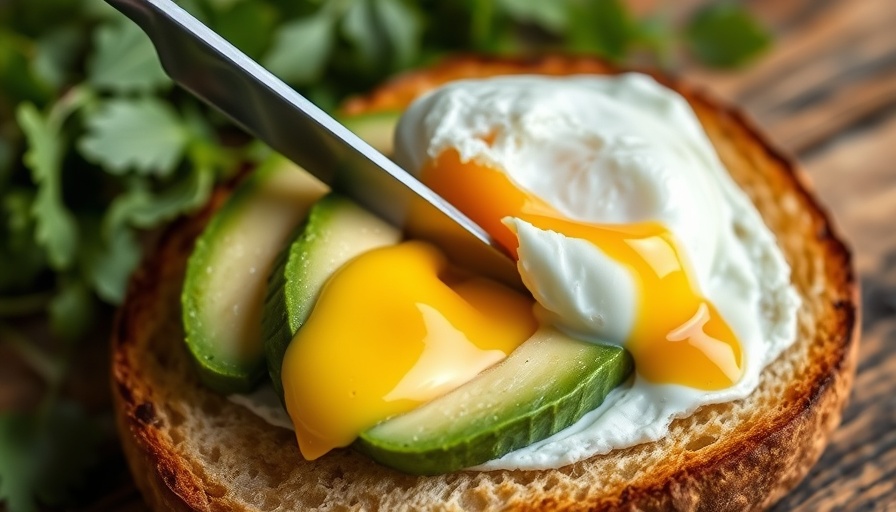
Master the Art of Poaching Eggs for a Nutritional Boost
Poaching an egg might seem daunting, but it opens the door to a world of culinary delight. With the right approach, this elegant dish can become a staple in any kitchen, enhancing protein-rich meals while keeping the preparation healthy. Poached eggs stand tall as a core ingredient in dishes like avocado toast or eggs Benedict, often favored for their silky texture and nutrient retention. Let's delve into how to poach eggs like a pro, incorporating valuable insights that elevate your cooking skills and dietary choices.
Why Poaching is the Healthiest Cooking Method
As the health trend takes center stage in our culinary endeavors, poached eggs deserve the spotlight. Unlike fried eggs, which can carry added fats and calories, poached eggs are cooked gently in simmering water, preserving their nutrients and delivering a rich flavor. This method ensures there’s no additional fat involved, making poached eggs a wholesome choice for anyone aiming to include more protein-rich foods in their diet.
Step-By-Step Guide: Making Perfect Poached Eggs
The process is simple yet requires a careful touch. Here’s a definitive guide to get your poaching technique just right:
- Choose Fresh Eggs: Freshness is key, as older eggs lose their structure. To test, place them in water; fresh eggs will sink.
- Prepare the Water: Fill a saucepan with water, adding a splash of vinegar. This helps the egg whites set quickly.
- Heat the Water: Achieve a gentle simmer—too aggressive heat can ruin your eggs.
- Whirlpool Technique: Stir the water to create a whirlpool before gently slipping in the egg. This motion helps the egg white form a cohesive shape around the yolk.
- Cook to Perfection: Aim for 3-4 minutes for a soft yolk or 5-6 for a firmer consistency.
- Serve with Flair: Place your perfectly poached egg atop a bed of greens or whole-grain toast for a nutrient-rich meal.
Understanding Quality in Poached Eggs
How do you determine if your poached egg is a success? Look for firm whites with a creamy yolk intact. A gentle press should yield slightly but remain firm, indicating the perfect poached state.
The Nutritional Value of Eggs
Eggs are packed with proteins, vitamins, and essential amino acids, making them a superfood essential for anyone looking to boost their nutrition. According to research published in Nutrition and Metabolism, poached eggs add a versatile, health-focused component to any meal. Their adaptability makes them a fantastic choice for breakfast, lunch, or dinner.
Incorporating Poached Eggs into a Balanced Diet
Integrating poached eggs into your daily meal plan can be simple and rewarding. They can grace salads, grain bowls, or toasts, lending a heartiness and richness that can elevate even the simplest dishes. They provide a protein punch for those following vegetarian or clean-eating protocols.
Creative Pairings to Transform Your Meals
While poached eggs are delightful on their own, consider pairing them with nutrient-dense options. Top them with a sprinkle of smoked paprika, serve them over sautéed spinach, or brighten them up with fresh herbs like parsley or chives. Avocado offers healthy fats that complement the protein while adding flavor and creaminess.
Conclusion: Making Poached Eggs a Culinary Staple
In conclusion, mastering the perfect poached egg can transform your meals from ordinary to extraordinary while contributing to a healthier diet. By incorporating this technique into your cooking repertoire, you not only enhance flavor and texture but also make a positive step towards a more nutritious lifestyle.
Ready to get started? Gather your ingredients and step into the kitchen to try your hand at poaching eggs. The journey to delicious, protein-rich meals awaits!
 Add Row
Add Row  Add
Add 




Write A Comment